In the skies above Louisiana, a tapestry of wings unfolds as numerous hawk species grace the diverse landscapes of this southern state.
Elevating the allure of the region’s skies are eleven distinct hawk species, each with its unique characteristics and ecological role.
From the majestic Red-Tailed Hawk with its iconic brick-red tail to the elusive Ferruginous Hawk, Louisiana serves as a haven for a remarkable array of these formidable raptors.
This introduction will delve into the lives of these aerial predators, exploring their scientific intricacies, distinctive features, and the pivotal roles they play within Louisiana’s ecosystems.
Witness the soaring prowess of these birds, their hunting strategies, and their significance in maintaining the delicate equilibrium of the state’s natural habitats.
Join us in unraveling the mysteries of these magnificent hawks, as we navigate the expansive skies of Louisiana to uncover the secrets hidden within their formidable wings. So, stay sharp.
11 Hawks in Louisiana
Louisiana’s ecology is a dynamic tapestry of marshes, swamps, and diverse ecosystems. Rich in biodiversity, its unique geography fosters a delicate balance between aquatic and terrestrial life.
From the Gulf Coast to bayous and beyond, Louisiana’s ecology is a complex web where flora and fauna thrive in harmony.
Find out the diverse and captivating world of hawks in Louisiana. From the soaring Red-Tailed Hawk to the agile Sharp-Shinned Hawk, each species brings unique traits to the state’s ecosystems.
Hawks in Louisiana, where eleven distinct species command the skies. Uncover the secrets of their scientific intricacies, distinctive features, and vital roles within the state’s diverse ecosystems.
Explore their characteristics, habitats, and roles in maintaining the delicate balance of the Louisiana environment.
1. Red-Tailed Hawk
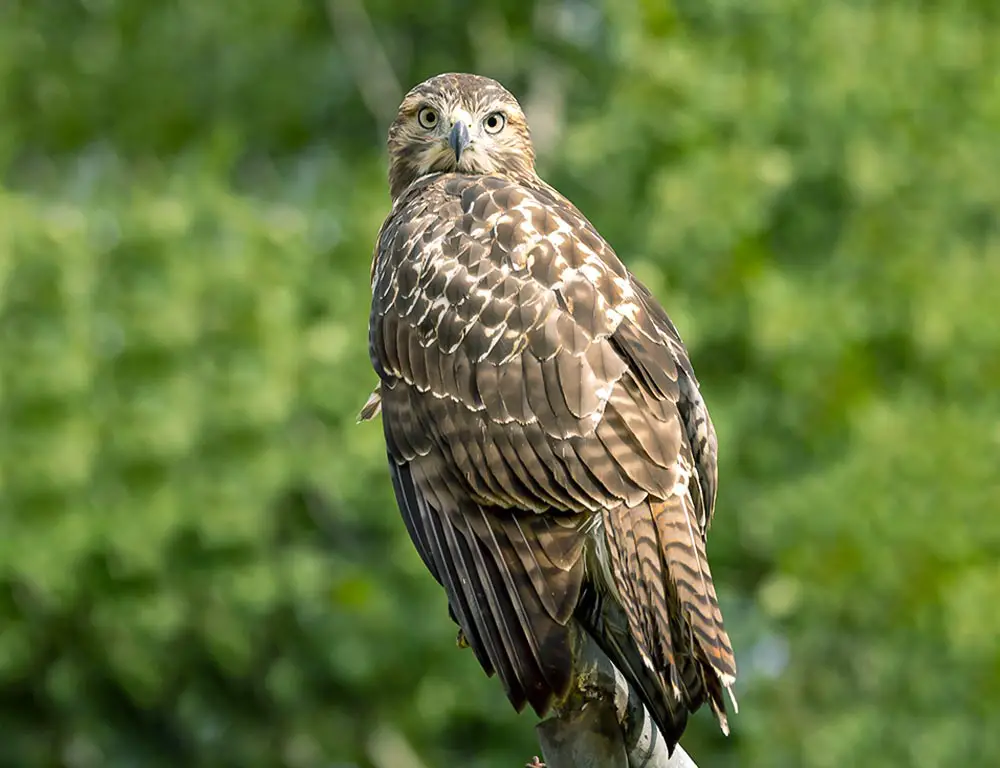
- Scientific Name: Buteo jamaicensis
- Life Span: 10-20 years
- Size: 18-26 inches (46-66 cm)
- Weight: 1.5-3.5 pounds (0.7-1.6 kg)
- Food: Small mammals, birds, and reptiles
- Population: Stable, widespread
The Red-Tailed Hawk, with its distinctive brick-red tail, is a common sight in Louisiana’s diverse habitats. Known for its adaptability, it can be found in urban areas, forests, and open fields.
With a broad wingspan and keen eyesight, it soars effortlessly, using thermal updrafts to scan the ground for prey.
These hawks are opportunistic hunters, often seen perched on high vantage points, waiting to swoop down on unsuspecting rodents or birds. Their powerful talons and sharp beak make them formidable predators.
2. Cooper’s Hawk

- Scientific Name: Accipiter cooperii
- Life Span: 7-10 years
- Size: 14-20 inches (36-51 cm)
- Weight: 0.5-1.5 pounds (227-680 g)
- Food: Birds, small mammals
- Population: Stable, locally common
The Cooper’s Hawk is a medium-sized bird of prey found in woodlands and suburban areas.
Recognizable by its long tail and short, rounded wings, it’s built for agility in flight. Cooper’s Hawks are known for their remarkable speed and maneuverability, which aids them in hunting smaller birds.
They are skilled ambush predators, often navigating through dense vegetation to surprise their avian prey.
Their adaptability to human-altered landscapes has contributed to their stable and common presence in many parts of Louisiana.
3. Swainson’s Hawk
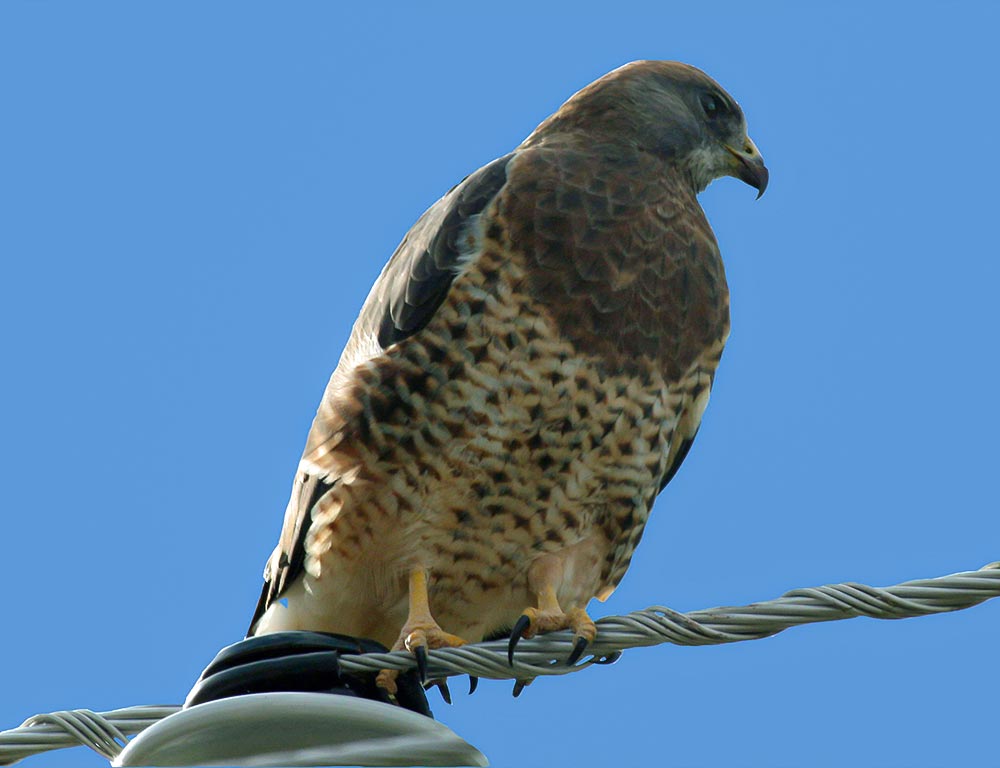
- Scientific Name: Buteo swainsoni
- Life Span: 7-10 years
- Size: 18-22 inches (46-56 cm)
- Weight: 1.5-3 pounds (0.7-1.4 kg)
- Food: Insects, small mammals, reptiles
- Population: Stable, migratory
Swainson’s Hawks are known for their distinctive plumage and long migration routes, making them a fascinating species in Louisiana.
During the breeding season, they inhabit grasslands and agricultural areas, where they feed on insects and small mammals.
Come fall, they embark on an impressive journey to South America, flying thousands of miles. Their congregations during migration can be a spectacular sight.
Despite their nomadic lifestyle, they contribute to the ecological balance by controlling insect populations, showcasing the interconnectedness of bird species in Louisiana’s ecosystems.
4. Sharp-Shinned Hawk
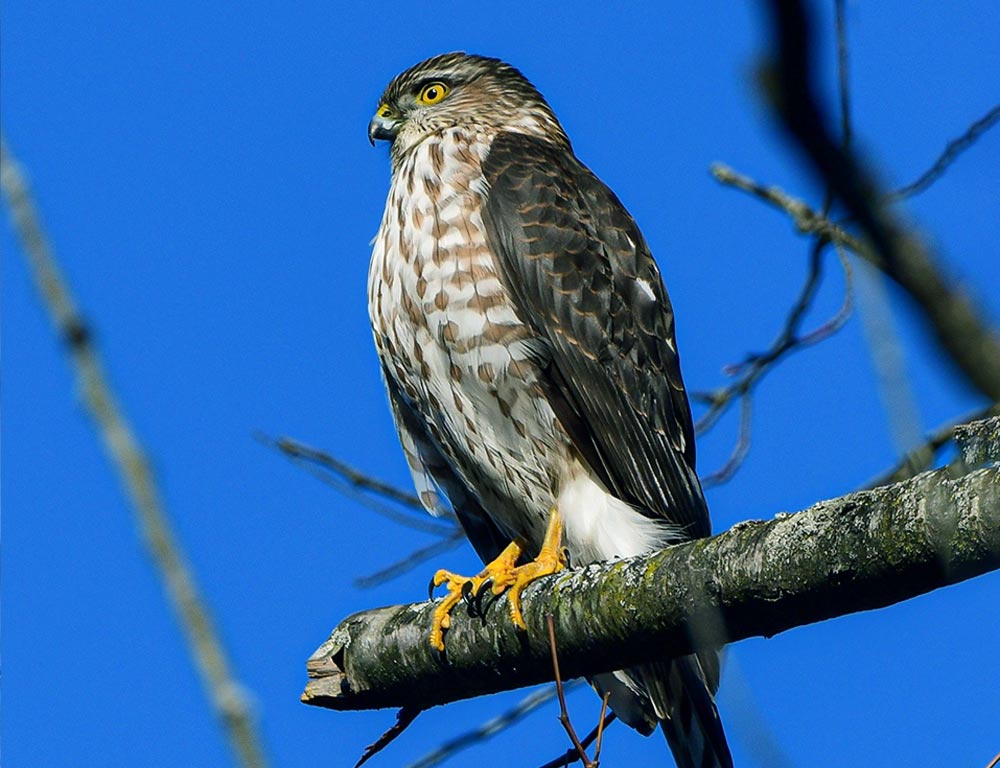
- Scientific Name: Accipiter striatus
- Life Span: 4-8 years
- Size: 9-14 inches (23-36 cm)
- Weight: 3-7 ounces (85-198 g)
- Food: Birds, small mammals
- Population: Stable, widespread
The Sharp-Shinned Hawk, with its short wings and long tail, is the smallest in North America.
Found in a variety of habitats, including forests and urban areas, they are agile hunters specializing in capturing small birds.
They are known for their rapid flight and quick maneuvers through dense vegetation, making them effective at ambushing their avian prey.
Despite their small size, they play a crucial role in controlling populations of songbirds and other small birds.
5. Rough-legged Hawk
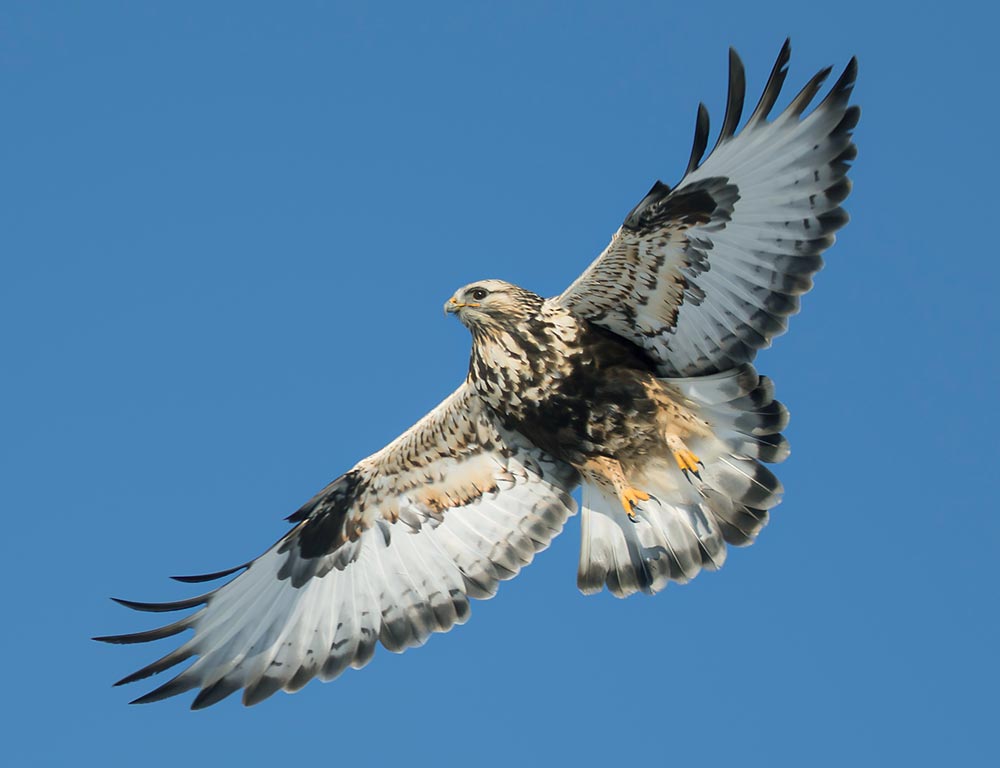
- Scientific Name: Buteo lagopus
- Life Span: 5-10 years
- Size: 18-24 inches (46-61 cm)
- Weight: 1.5-3.5 pounds (0.7-1.6 kg)
- Food: Small mammals, birds
- Population: Stable, migratory
The Rough-legged Hawk is adapted for life in the Arctic tundra but can be found in Louisiana during the winter months.
Named for the feathers that extend down their legs, they are well-suited for colder climates.
During their winter stay, they inhabit open areas and marshes, using their keen eyesight to spot small mammals like voles and mice.
Their presence adds to the diversity of raptors in Louisiana, showcasing the adaptability of these birds to different environments.
6. Broad-Winged Hawk
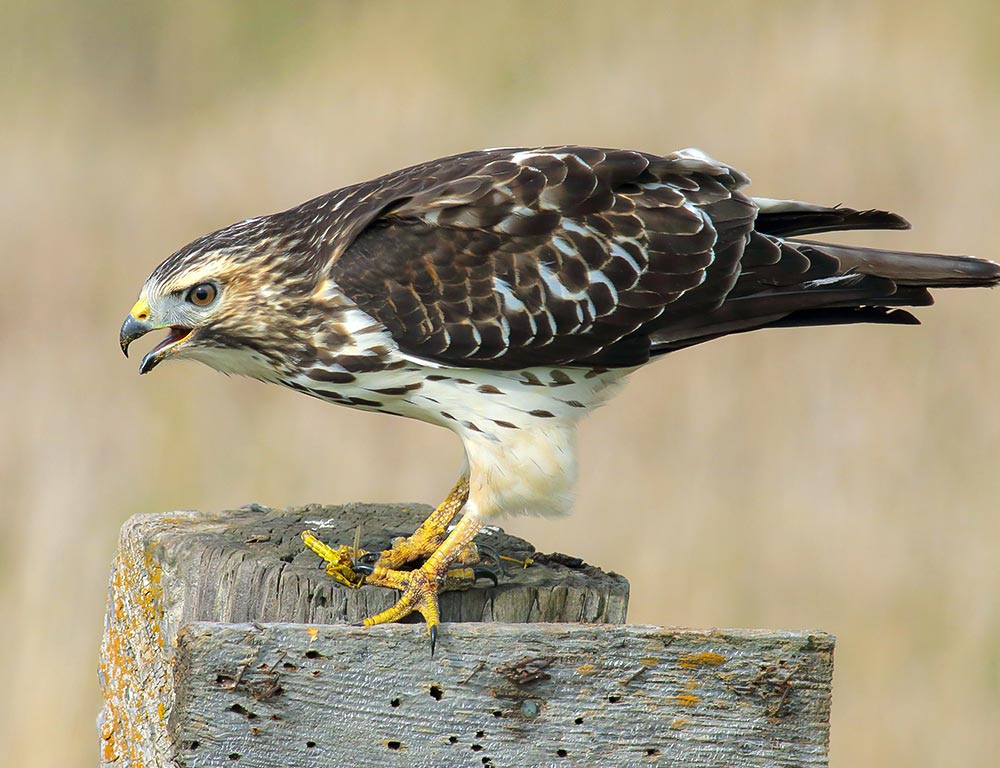
- Scientific Name: Buteo platypterus
- Life Span: 4-5 years
- Size: 13-17 inches (33-43 cm)
- Weight: 9-20 ounces (255-567 g)
- Food: Small mammals, reptiles, birds
- Population: Stable, migratory
The Broad-Winged Hawk is known for its distinctive markings and migration patterns.
During the breeding season, they can be found in forests, but in the fall, they undertake an impressive journey to Central and South America.
They are often observed soaring in large flocks, utilizing thermal currents for efficient long-distance flight.
Their migratory behavior is a spectacle in Louisiana, and their adaptability to different habitats demonstrates their importance in maintaining ecological balance.
7. White-Tailed Hawk
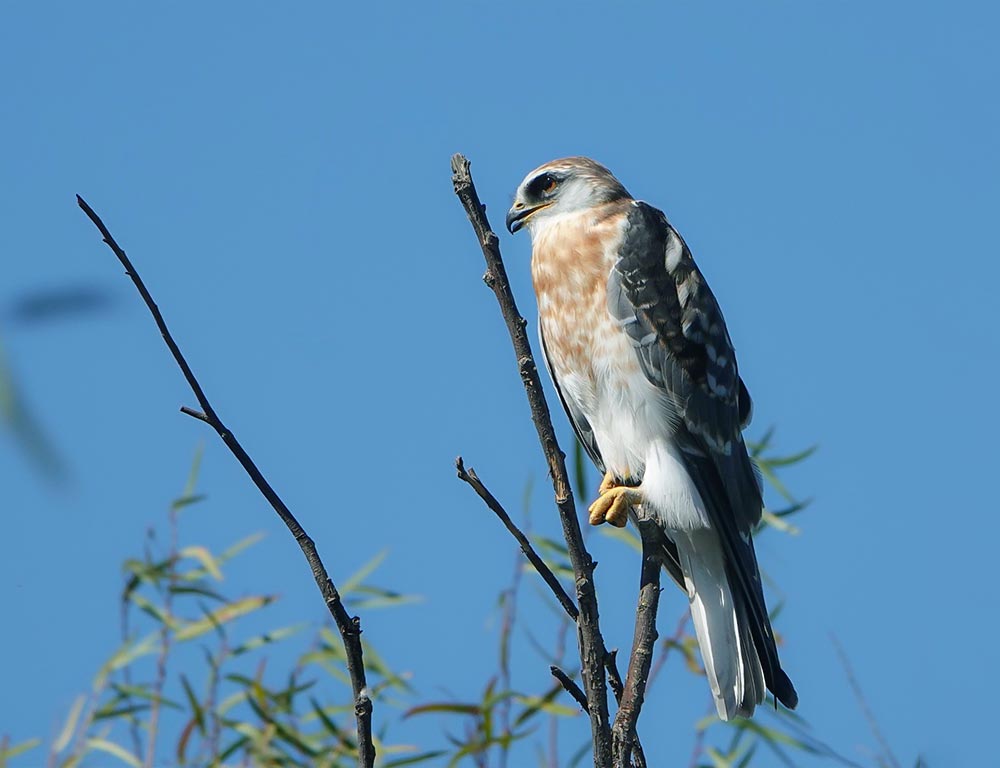
- Scientific Name: Geranoaetus albicaudatus
- Life Span: 10-15 years
- Size: 18-24 inches (46-61 cm)
- Weight: 2-3.5 pounds (0.9-1.6 kg)
- Food: Small mammals, reptiles, birds
- Population: Stable, localized
While White-Tailed Hawks are more commonly found in the southwestern United States, they occasionally venture into parts of Louisiana.
Recognized by their striking appearance, with a white tail and dark plumage, they prefer open habitats like grasslands and savannas.
These hawks are versatile hunters, preying on small mammals, reptiles, and birds.
Despite their localized presence, they contribute to the biodiversity of raptors in Louisiana and play a role in maintaining the health of their ecosystems.
8. Northern Harrier
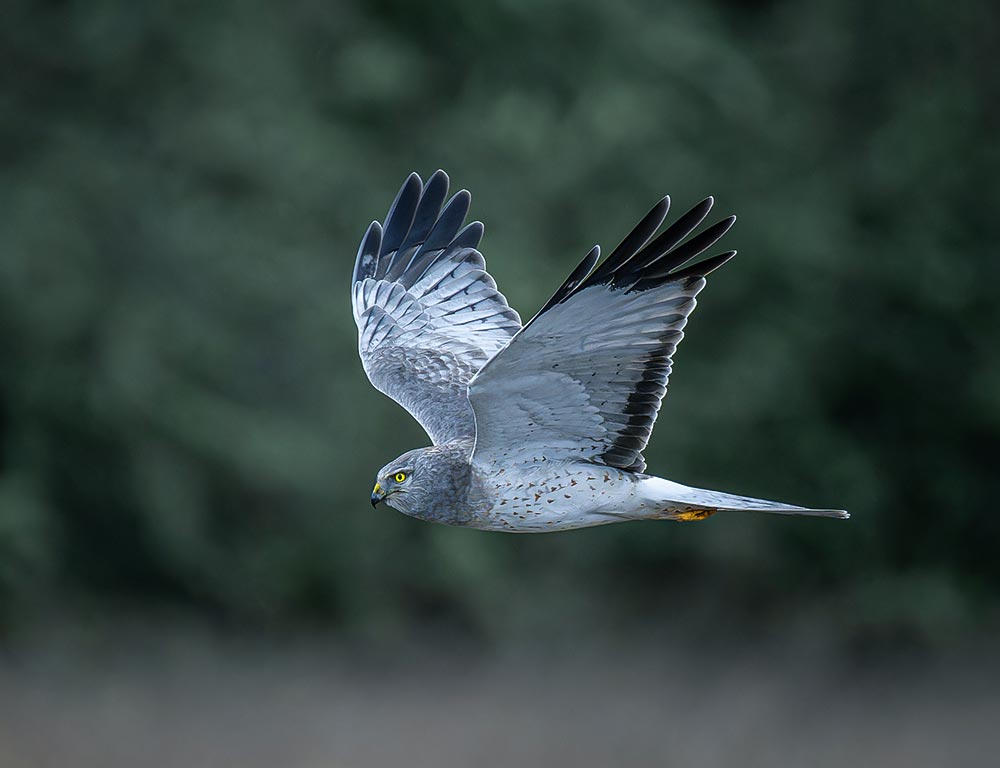
- Scientific Name: Circus hudsonius
- Life Span: 5-10 years
- Size: 18-24 inches (46-61 cm)
- Weight: 10-26 ounces (283-737 g)
- Food: Small mammals, birds
- Population: Stable, widespread
The Northern Harrier is a distinctive hawk known for its low flight over marshes and open fields.
Easily identifiable by its owl-like face and white rump, these hawks are expert hunters, relying on their keen hearing and vision to locate small mammals like voles and mice.
Their low, slow flight, often hovering, allows them to survey large areas for prey.
In Louisiana, they can be found in a variety of habitats, contributing to the ecosystem by controlling rodent populations and playing a role in maintaining the health of wetland ecosystems.
9. Osprey

- Scientific Name: Pandion haliaetus
- Life Span: 7-10 years
- Size: 21-24 inches (53-61 cm)
- Weight: 2.5-4.5 pounds (1.1-2 kg)
- Food: Fish
- Population: Stable, widespread
The Osprey, often referred to as the “fish hawk,” is a bird of prey well-adapted for aquatic hunting. With reversible outer toes and spiny foot pads, they excel at grasping and carrying fish.
Ospreys can be found near water bodies in Louisiana, including rivers, lakes, and coastal areas. They build large nests on structures like poles and cliffs, showcasing their ability to adapt to human-altered landscapes.
Their presence is an indicator of healthy aquatic ecosystems, and they play a crucial role in regulating fish populations.
10. Red-Shouldered Hawk
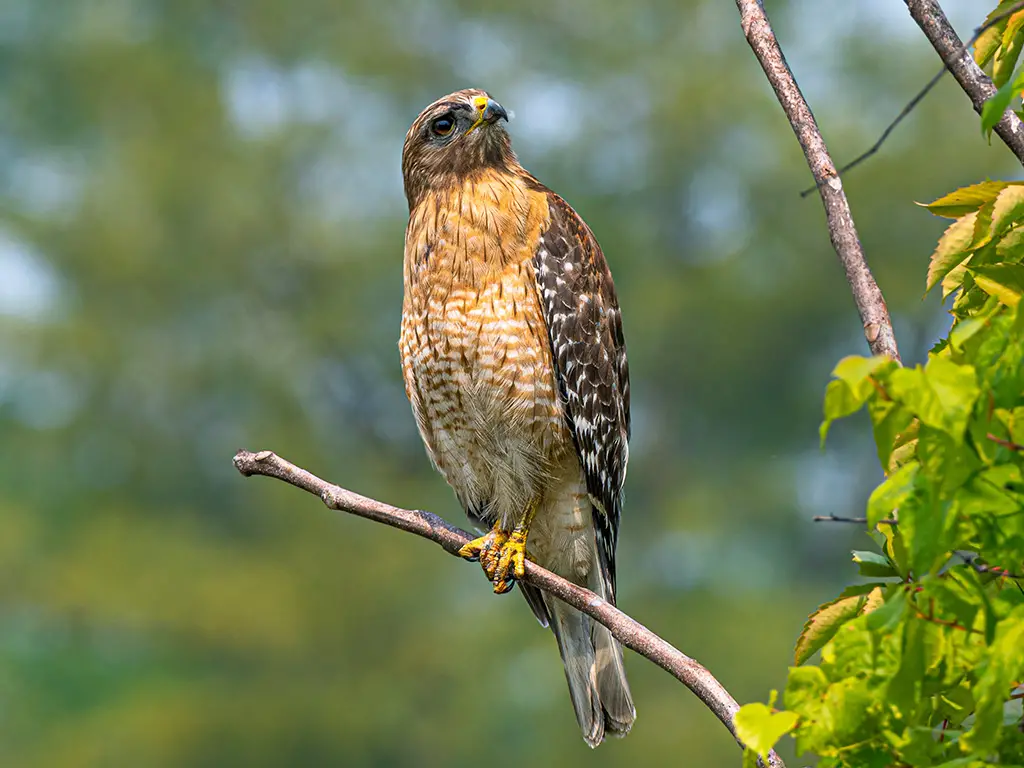
- Scientific Name: Buteo lineatus
- Life Span: 10-15 years
- Size: 16-24 inches (41-61 cm)
- Weight: 1-2.5 pounds (0.45-1.13 kg)
- Food: Small mammals, reptiles, birds
- Population: Stable, localized
The Red-Shouldered Hawk is a medium-sized raptor known for its distinctive reddish-brown shoulders. Typically found in wooded habitats, they are vocal birds, often calling loudly from perches.
Their diet consists of small mammals, reptiles, and birds, and they are known for their hunting style, which involves perching in a concealed location and ambushing their prey.
In Louisiana, they are important for controlling rodent populations and contributing to the balance of the forest ecosystem.
11. Ferruginous Hawk
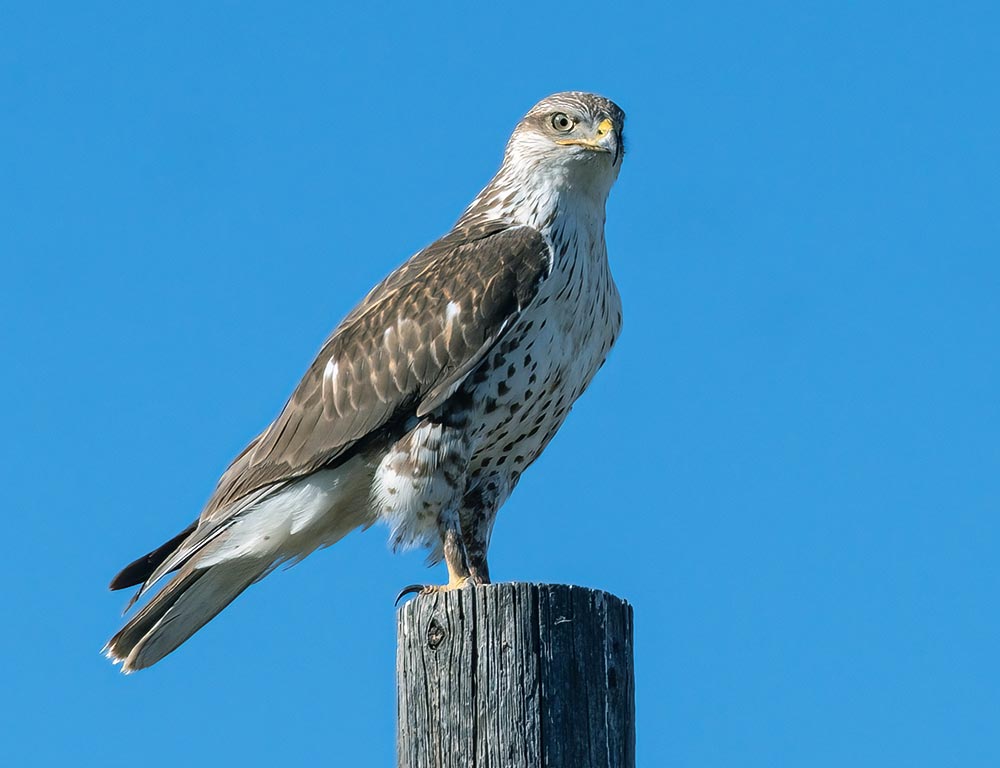
- Scientific Name: Buteo regalis
- Life Span: 10-15 years
- Size: 22-27 inches (56-69 cm)
- Weight: 2-5.5 pounds (0.9-2.5 kg)
- Food: Small mammals, birds
- Population: Stable, localized
The Ferruginous Hawk is the largest in North America, known for its rusty-red plumage on its legs and the back of its head.
Preferring open landscapes like prairies and deserts, they are powerful hunters of small mammals and birds. Their adaptability to various habitats allows them to thrive in different regions of Louisiana.
Ferruginous Hawks are also known for their unique nesting behaviors, often reusing nests from previous years or building large structures on the ground.
Despite their localized distribution, they play a significant role in maintaining ecological balance in their chosen habitats.
Wrapping Up
Louisiana’s skies are home to a remarkable array of hawks, each playing a vital role in the state’s ecosystems.
From the majestic Red-Tailed Hawk to the elusive Ferruginous Hawk, these birds of prey contribute to the delicate balance of nature.
Whether soaring over wetlands, hunting in forests, or navigating urban landscapes, these hawks showcase adaptability and resilience.
Their diverse hunting styles, nesting behaviors, and migratory patterns highlight the intricate web of life they weave within Louisiana’s rich tapestry of habitats.
Observing these magnificent birds provides a glimpse into the intricate dance of predator and prey, emphasizing the interconnectedness of all living beings in this unique environment. Thank you so much.